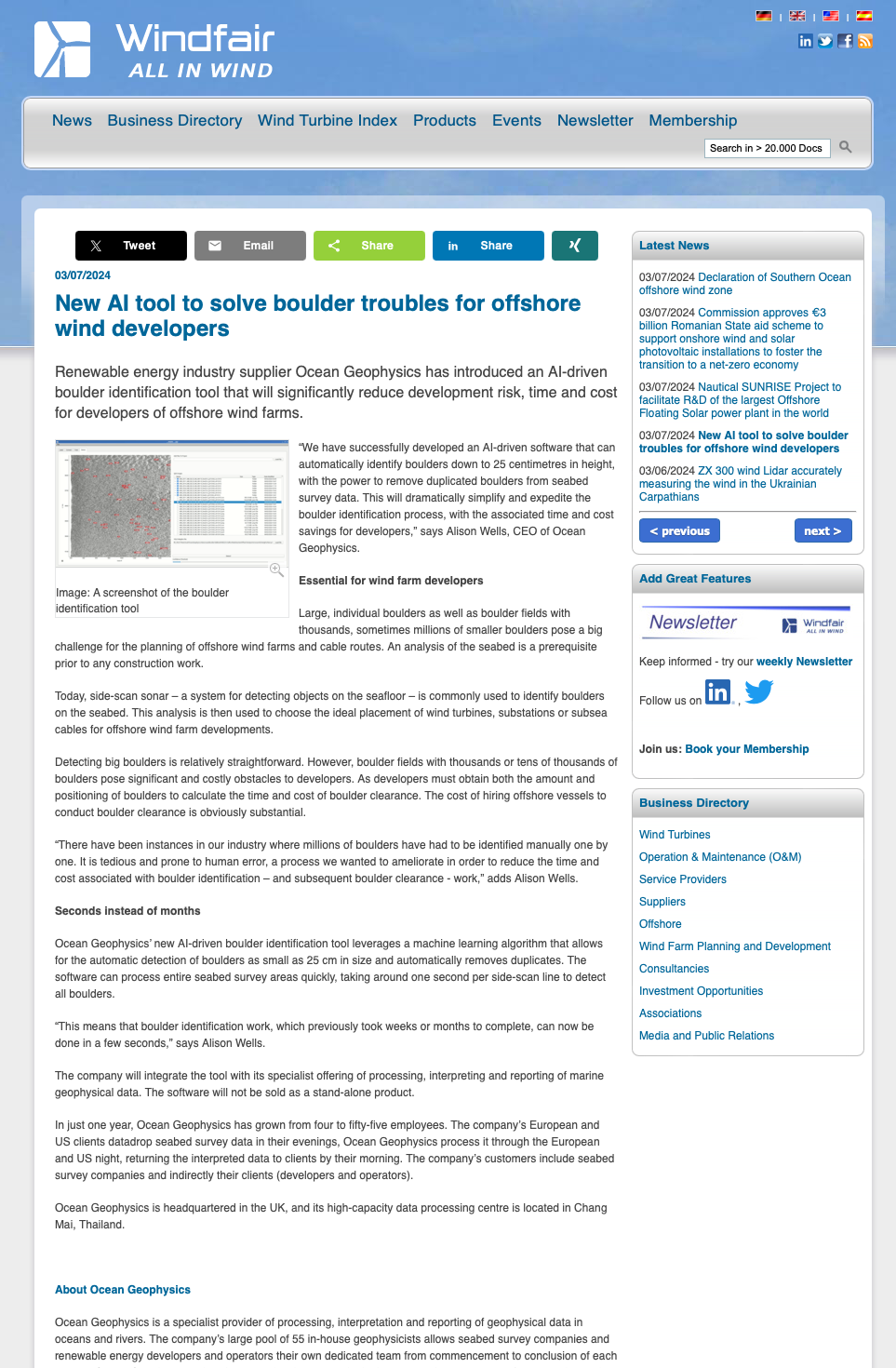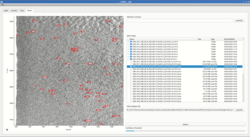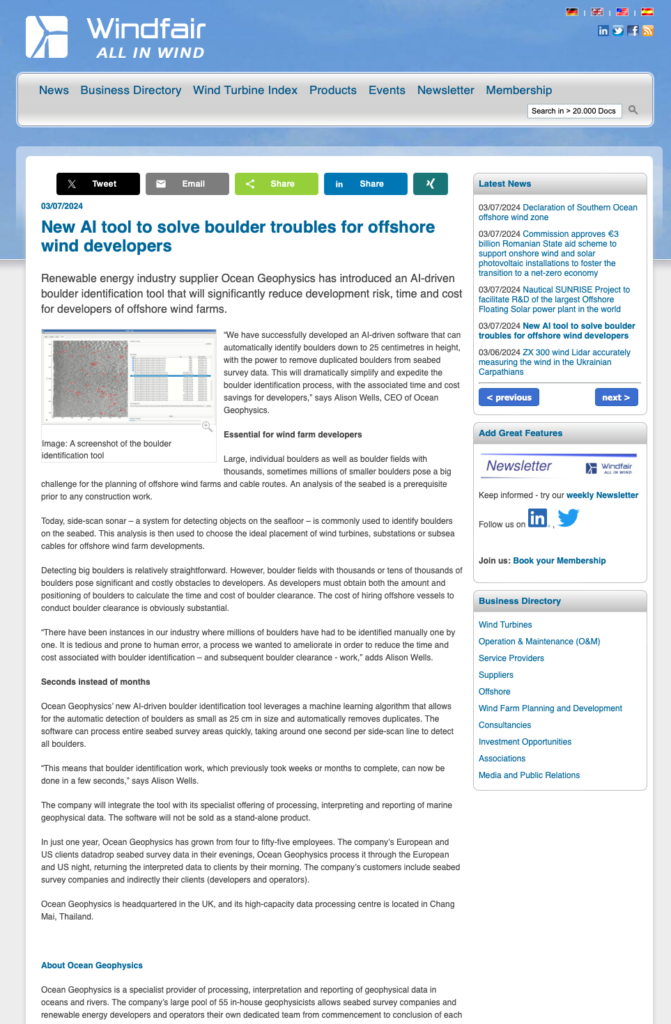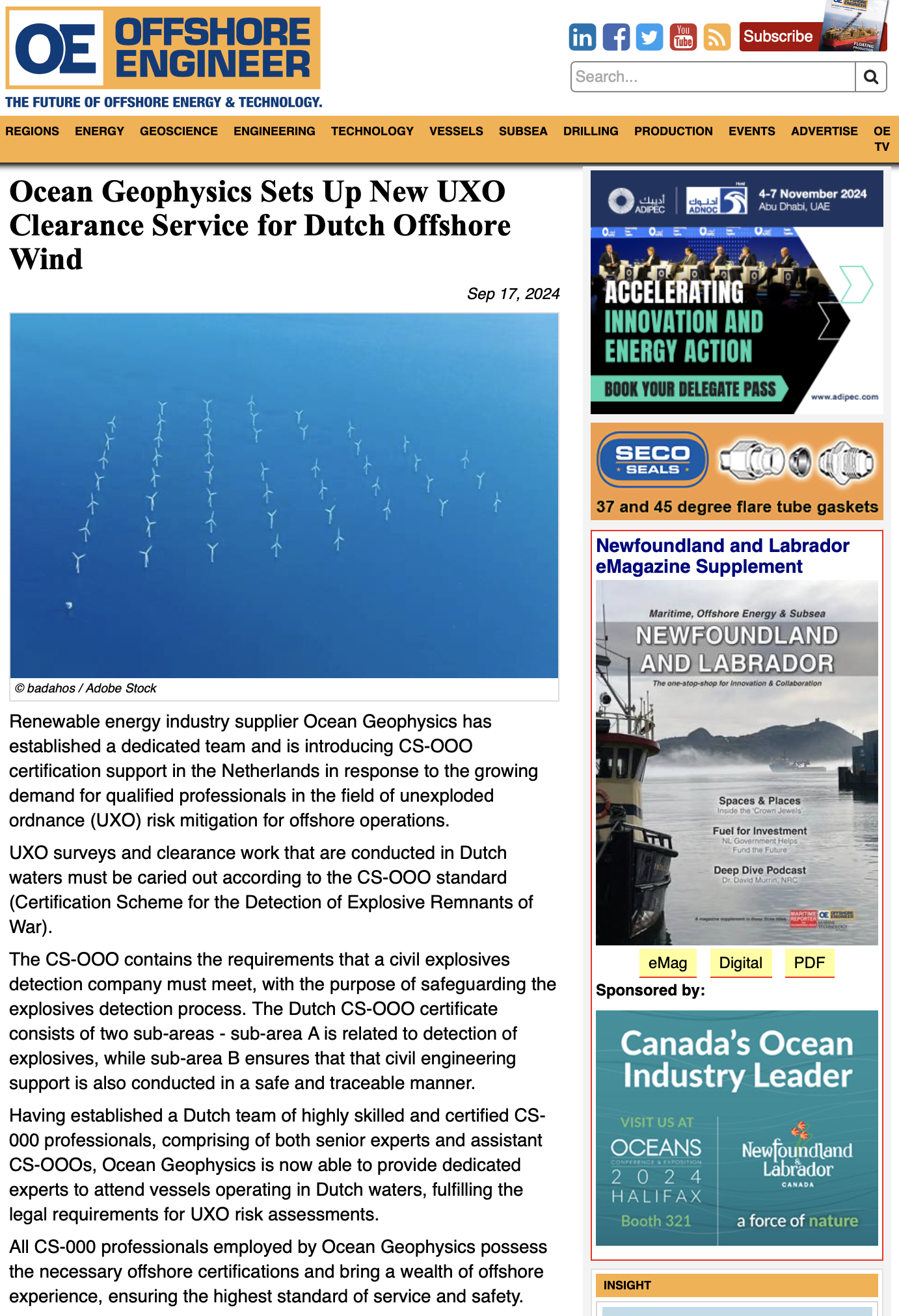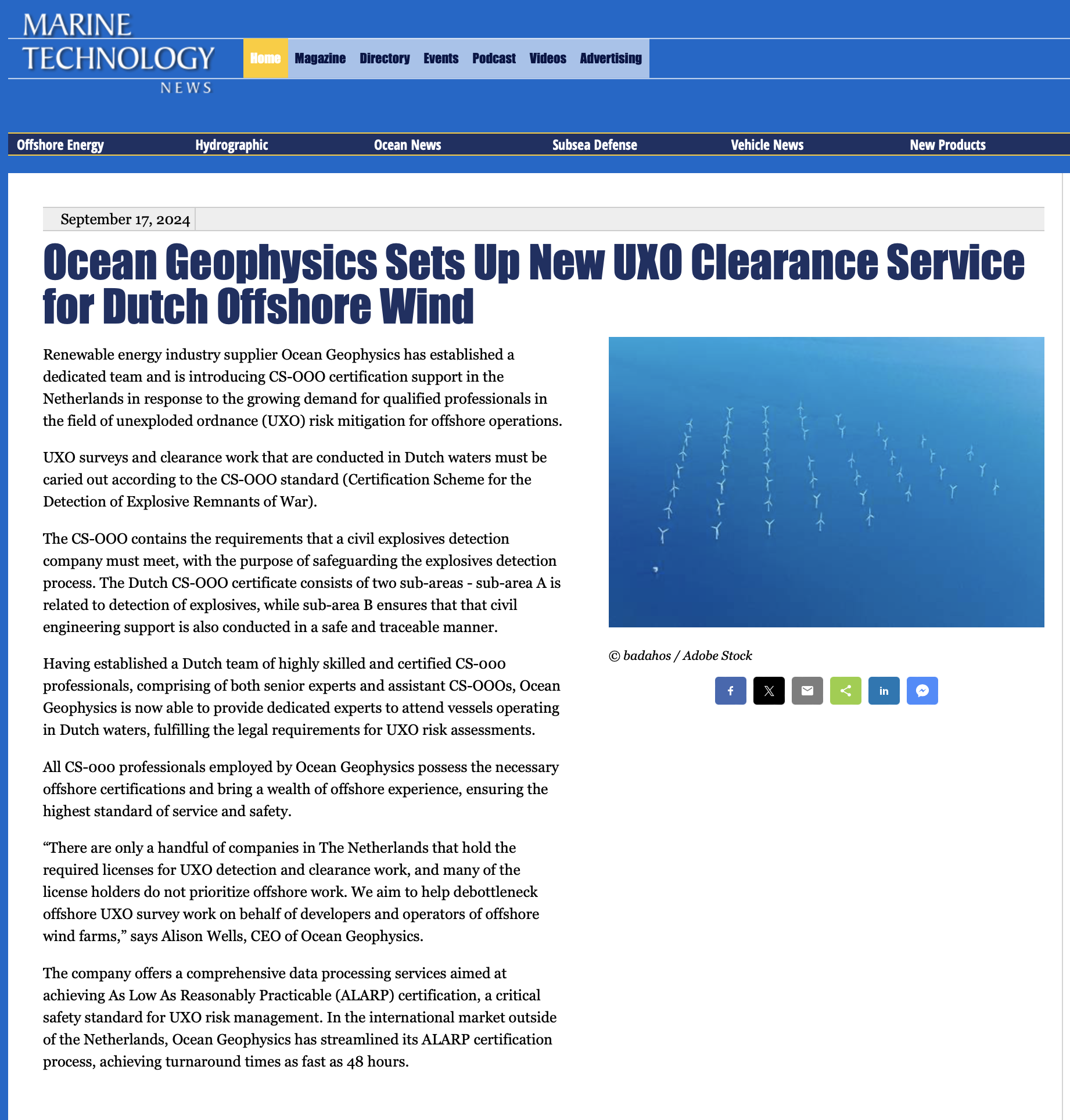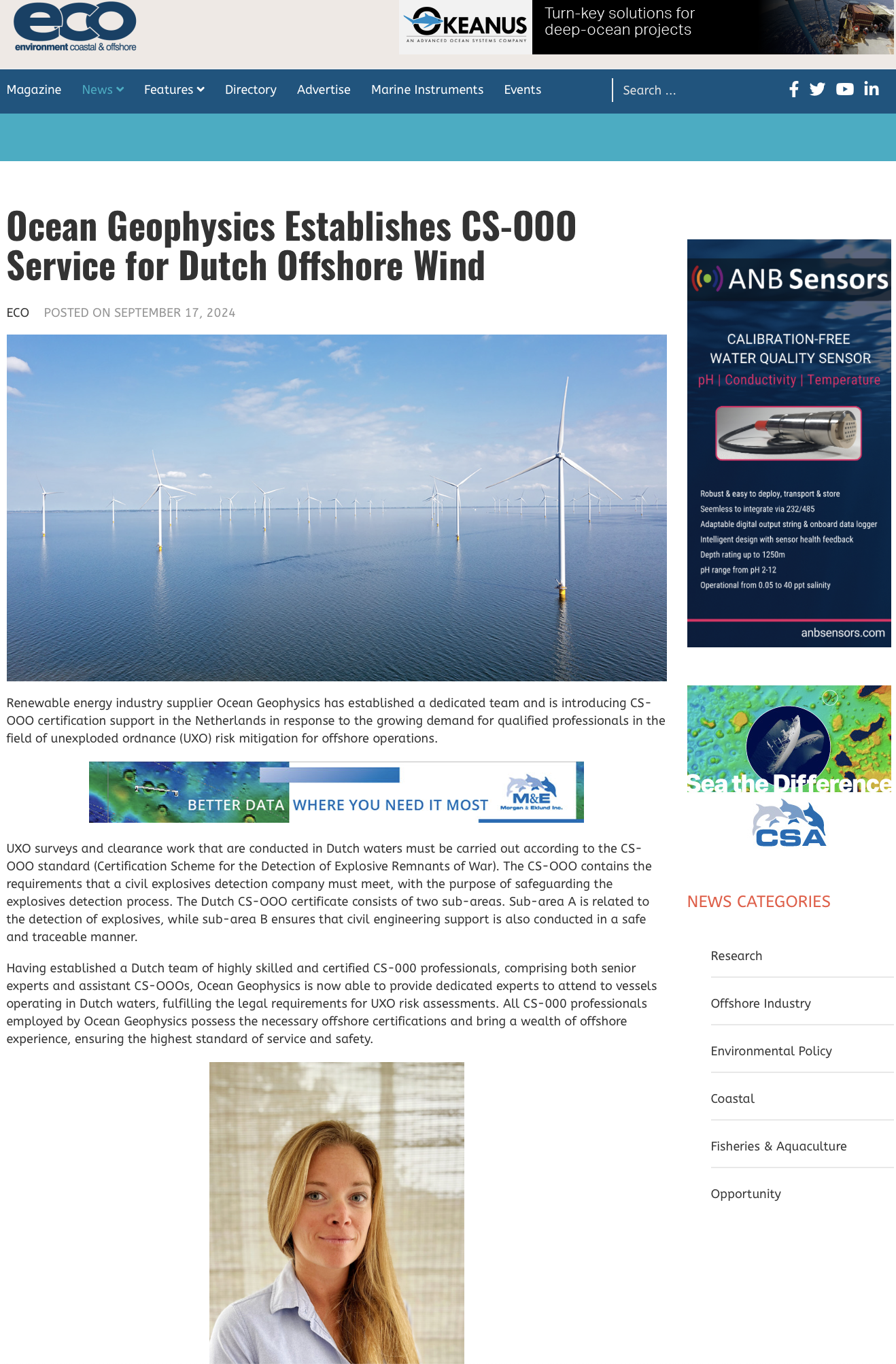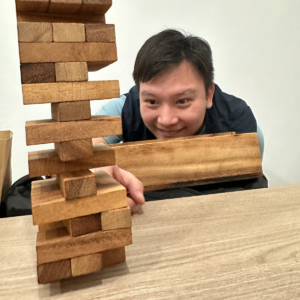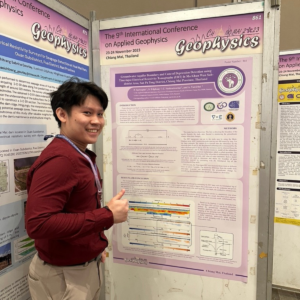“We have successfully developed an AI-driven software that can automatically identify boulders down to 25 centimetres in height, with the power to remove duplicated boulders from seabed survey data. This will dramatically simplify and expedite the boulder identification process, with the associated time and cost savings for developers,” says Alison Wells, CEO of Ocean Geophysics.
Essential for wind farm developers
Large, individual boulders as well as boulder fields with thousands, sometimes millions of smaller boulders pose a big challenge for the planning of offshore wind farms and cable routes. An analysis of the seabed is a prerequisite prior to any construction work.
Today, side-scan sonar – a system for detecting objects on the seafloor – is commonly used to identify boulders on the seabed. This analysis is then used to choose the ideal placement of wind turbines, substations or subsea cables for offshore wind farm developments.
Detecting big boulders is relatively straightforward. However, boulder fields with thousands or tens of thousands of boulders pose significant and costly obstacles to developers. As developers must obtain both the amount and positioning of boulders to calculate the time and cost of boulder clearance. The cost of hiring offshore vessels to conduct boulder clearance is obviously substantial.
“There have been instances in our industry where millions of boulders have had to be identified manually one by one. It is tedious and prone to human error, a process we wanted to ameliorate in order to reduce the time and cost associated with boulder identification – and subsequent boulder clearance – work,” adds Alison Wells.
Seconds instead of months
Ocean Geophysics’ new AI-driven boulder identification tool leverages a machine learning algorithm that allows for the automatic detection of boulders as small as 25 cm in size and automatically removes duplicates. The software can process entire seabed survey areas quickly, taking around one second per side-scan line to detect all boulders.
“This means that boulder identification work, which previously took weeks or months to complete, can now be done in a few seconds,” says Alison Wells.
The company will integrate the tool with its specialist offering of processing, interpreting and reporting of marine geophysical data. The software will not be sold as a stand-alone product.
In just one year, Ocean Geophysics has grown from four to fifty-five employees. The company’s European and US clients datadrop seabed survey data in their evenings, Ocean Geophysics process it through the European and US night, returning the interpreted data to clients by their morning. The company’s customers include seabed survey companies and indirectly their clients (developers and operators).
Ocean Geophysics is headquartered in the UK, and its high-capacity data processing centre is located in Chang Mai, Thailand.
Ocean Geophysics is a specialist provider of processing, interpretation and reporting of geophysical data in oceans and rivers. The company’s large pool of 55 in-house geophysicists allows seabed survey companies and renewable energy developers and operators their own dedicated team from commencement to conclusion of each project. Ocean Geophysics is headquartered in the UK, and a high-capacity data processing facility in Thailand provides overnight data processing and reporting capabilities for customers. For more information, see www.oceangeophysics.com

